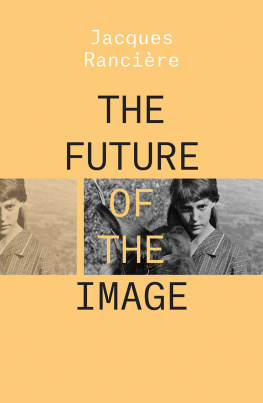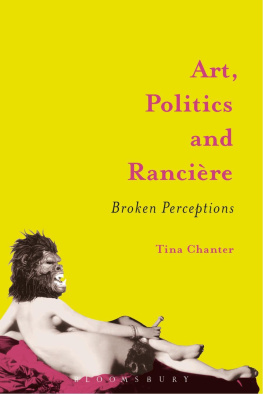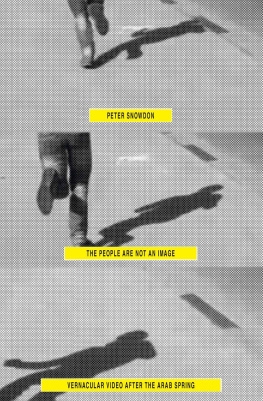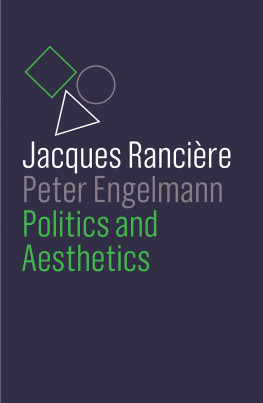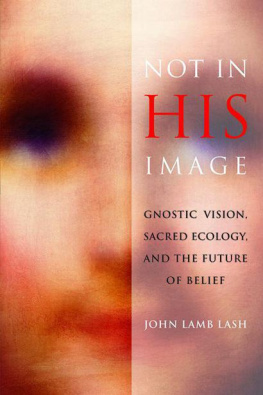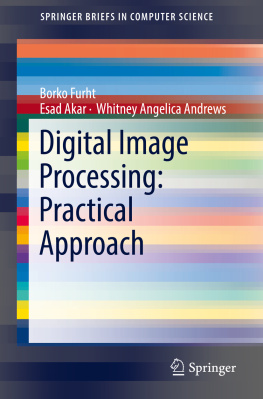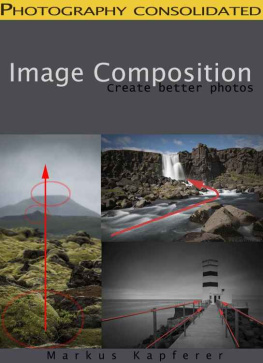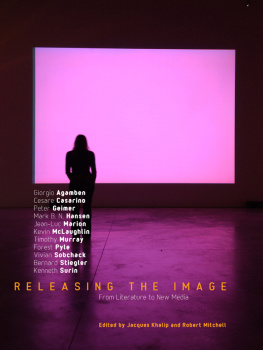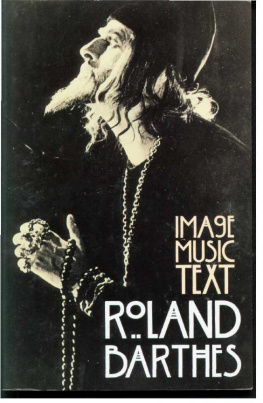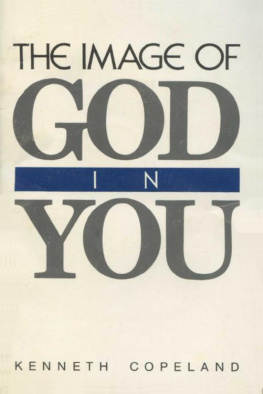Contents

The Future of the Image
The Future
of the Image

JACQUES RANCIRE
Translated by Gregory Elliott


This book is supported by the French Ministry of Foreign Affairs
as part of the Burgess programme run by the Cultural Department
of the French Embassy in London. (www.frenchbooknews.com)
This paperback edition published by Verso 2019
First published in English Verso 2007
Translation Gregory Elliott 2007, 2019
First published as Le destin des images
Copyright Editions La Fabrique 2003
All rights reserved
The moral rights of the author and translator have been asserted
1 3 5 7 9 10 8 6 4 2
Verso
UK: 6 Meard Street, London W1F 0EG
USA: 20 Jay Street, Suite 1010, Brooklyn, NY 11201
www.versobooks.com
Verso is the imprint of New Left Books
ISBN-13: 978-1-78873-654-1
ISBN-13: 978-1-78873-655-8 (UK EBK)
ISBN-13: 978-1-78873-656-5 (US EBK)
British Library Cataloguing in Publication Data
A catalogue record for this book is available from the British Library
Library of Congress Cataloging-in-Publication Data
A catalog record for this book is available from the Library of Congress
Typeset in Times by Hewer Text UK Ltd
Printed and bound by CPI Group (UK) Ltd, Croydon, CR0 4YY
Contents
The Future of the Image and Sentence, Image, History were given as talks at the Centre National de la Photographie, at the invitation of Annik Duvillaret, on 31 January 2002 and 24 October 2002.
Painting in the Text originated from a talk given on 23 March 1999 at the Akademie Bildenden Knste in Vienna, at the invitation of Eric Alliez and Elisabeth von Samsonow. It also incorporates parts of Les noncs de la rupture, a contribution to Ruptures: De la discontinuit dans la vie artistique, edited by Jean Galard (ENSBA/Muse de Louvre, 2002).
The Surface of Design was first published under the title Les ambivalences du graphisme in the collective work Design Graphique? edited by Annick Lantenois (Ecole rgionale des Beaux-Arts de Valance, 2002).
Are Some Things Unrepresentable? was first published in No. 36 of Genre humain, edited by Jean-Luc Nancy, under the title Lart et la mmoire des camps (Autumn/Winter 2001).
All the texts have been revised for publication here.
My title might lead readers to anticipate some new odyssey of the image, taking us from the Aurorean glory of Lascauxs paintings to the contemporary twilight of a reality devoured by media images and an art doomed to monitors and synthetic images. But my intention is different. By examining how a certain idea of fate and a certain idea of the image are tied up in the apocalyptic discourses of todays cultural climate, I would like to pose the following question: are we in fact referring to a simple, univocal reality? Does not the term image contain several functions whose problematic alignment precisely constitutes the labour of art? On this basis it will perhaps be possible to reflect on what artistic images are, and contemporary changes in their status, more soundly.
Let us start at the beginning. What is being spoken about, and what precisely are we being told, when it is said that there is no longer any reality, but only images? Or, conversely, that there are no more images but only a reality incessantly representing itself to itself? These two discourses seem to be opposed. Yet we know that they are forever being converted into one another in the name of a rudimentary argument: if there is now nothing but images, there is nothing other than the image. And if there is nothing other than the image, the very notion of the image becomes devoid of content. Several contemporary authors thus contrast the Image, which refers to an Other, and the Visual, which refers to nothing but itself.
This simple line of argument already prompts a question. That the Same is the opposite of the Other is readily intelligible. Understanding what this Other is is less straightforward. In the first place, by what signs is its presence or absence to be recognized? What allows us to say that the Other is there in one visible form on a screen but not in another? That it is present, for example, in a shot from Au hasard Balthazar and not in an episode of Questions pour un champion?
The tautology posited here as the essence of the Visual is manifestly nothing but the tautology of the discourse itself. The latter simply tells us that the Same is same and the Other other. Through the rhetorical play of telescoped, independent propositions, it passes itself off as more than a tautology by identifying the general properties of universals with the characteristics of a technical device. But the technical properties of the cathode tube are one thing and the aesthetic properties of the images we see on the screen are another. The screen precisely lends itself to accommodating the results both of Questions pour un champion and of Bressons camera. It is therefore clear that it is these results which are inherently different. The nature of the amusement television offers us, and of the affects it produces in us, is independent of the fact that the light derives from the apparatus. And the intrinsic nature of Bressons images remains unchanged, whether we see the reels projected in a cinema, or through a cassette or disc on our television screen, or a video projection. The Same is not on one side, while the Other is on the other. The set with in-built light and the camera of Questions pour un champion place us before a feat of memory and presence of mind that is in itself foreign to them. On the other hand, the film of the film theatre or the cassette of Au hasard Balthazar viewed on our screen show us images that refer to nothing else, which are themselves the performance.
THE ALTERITY OF IMAGES
These images refer to nothing else. This does not mean, as is frequently said, that they are intransitive. It means that alterity enters into the very composition of the images, but also that such alterity attaches to something other than the material properties of the cinematic medium. The images of Au hasard Balthazar are not primarily manifestations of the properties of a certain technical medium, but operations: relations between a whole and parts; between a visibility and a power of signification and affect associated with it; between expectations and what happens to meet them. Let us look at the beginning of the film. The play of images has already begun when the screen is still dark, with the crystalline notes of a Schubert sonata. It continues, while the credits flash by against a background conjuring up a rocky wall, a wall of dry-stone or boiled cardboard, when braying has replaced the sonata. Then the sonata resumes, overlaid next by a noise of small bells which carries on into the first shot of the film: a little donkeys head sucking at its mothers teat in close-up. A very white hand then descends along the dark neck of the little donkey, while the camera ascends in the opposite direction to show the little girl whose hand this is, her brother and her father. A dialogue accompanies this action (We must have it Give it to us Children, thats impossible), without us ever seeing the mouth that utters these words. The children address their father with their backs to us; their bodies obscure his face while he answers them. A dissolve then introduces a shot that shows us the opposite of these words: from behind, in a wide-angled shot, the father and the children come back down leading the donkey. Another dissolve carries us over into the donkeys baptism another close-up that allows us to see nothing but the head of the animal, the arm of the boy who pours the water, and the chest of the little girl who holds a candle.

